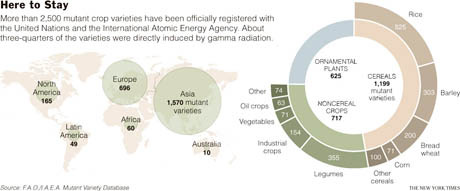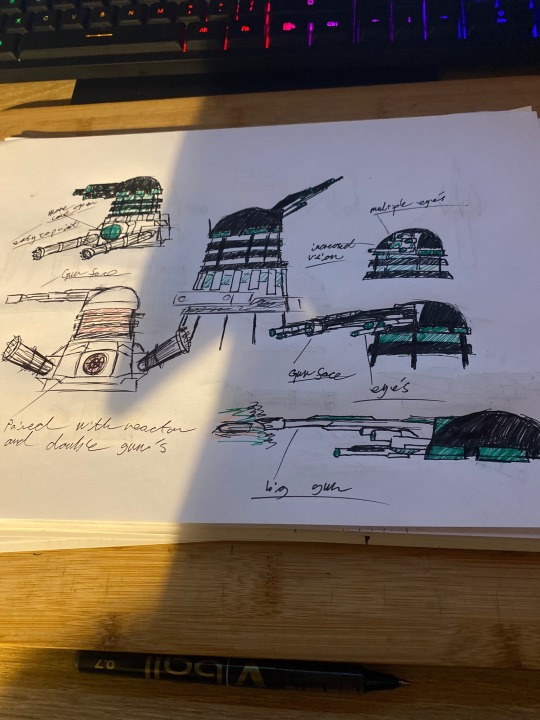#Imaging Chemicals Market
Text
Imaging Chemicals Market is Led by North America
The imaging chemicals market was USD 31.7 billion in 2023, which will touch USD 47.0 billion, with a 5.8% compound annual growth rate, by 2030.
Imaging chemicals, such as film developers and contrast agents, are key for improving the visibility of anatomical structures and finding irregularities in medical images. This approach to these chemicals guarantees diagnostic precision, patient safety,…
View On WordPress
#applications#Electronic Displays#Imaging Chemicals Market#Key players#market trends#Medical Imaging#Photography#Printing#Visual Capture
0 notes
Link
#adroit market research#imaging chemicals market#imaging chemicals market 2020#imaging chemicals market size
0 notes
Link
#adroit market research#imaging chemicals market#imaging chemicals market 2020#imaging chemicals market size
0 notes
Link
#adroit market research#imaging chemicals market#imaging chemicals market 2020#imaging chemicals market size
0 notes
Text
Imaging Chemicals and Materials Market Sales Revenue Strategies Insights 2022-2032 | Agfa-Gevaert N.V., BASF SE, Becton Dickinson and Company, C.R. Kennedy, Clariant
Imaging Chemicals and Materials Market Sales Revenue Strategies Insights 2022-2032 | Agfa-Gevaert N.V., BASF SE, Becton Dickinson and Company, C.R. Kennedy, Clariant
Global Imaging Chemicals and Materials Market report studies the Imaging Chemicals and Materials with many aspects of the industry such as the market size, market status, market trends and forecast, the report also provides brief information of the competitors and the specific growth opportunities with key market drivers. Find the complete Imaging Chemicals and Materials Market analysis segmented…

View On WordPress
#Imaging Chemicals and Materials#Imaging Chemicals and Materials manufacturing Companies#Imaging Chemicals and Materials Market#Imaging Chemicals and Materials market CAGR#Imaging Chemicals and Materials market share#Imaging Chemicals and Materials market size#Imaging Chemicals and Materials market Trends
0 notes
Text
Whoever you ship Mizu with, it is ultimately gay as fuck.
Mizu and Akemi? That's just two angry wlw's haunted by the image of one another who have been pushed into different but mirroring paths that will one day intertwine, and their anger and regret will balloon into a terrifying clash. Violent? Yes. Passionate? Extremely. Sexual Tension? Nuclear-level.
Mizu and Taigen? Mizu didn't really mind the other acts of sex in Madame Kaji's brothel until she got to the dudes fuckin, and her immediate thought was how close Taigen and his lips were during their tumble in their duel. It's very clear Mizu sees her relationship with Taigen as homoerotic, and has shown some interest in it. That's just trans masc x bottom bi, baby.
Mizu, Taigen and Akemi?
So. Fucking. G A Y.
There ain't no cis-het reading of Blue Eye Samurai, bucko. This shit's the purest crystal queer in the market. It ain't cloudy. It ain't distilled.
This show is raw, uncut Mizumphetamine. Mizu is the chemicals injected into the water that's making the freaking fags frogs gay.
Mizu's the baddest bitch around. Be in awe of this undying fuck's energy. She is 2023's top bitch magnet. She doesn't get bitches. She pins them down, strikes the fear of her in them, and wields a fucking sword made to slaughter the heavens.
#blue eye samurai#mizu#mizu blue eye samurai#taigen#akemi#i lost my mind again#i watched it again#blue eye samurai has consumed my very being#the sheer thirst this beast of a warrior generated was enough to conjure up a second season#no one does it like mizu#goated show#goated mc#we won with her#mizu is gender#us gays stay winning we gon get arcane and castlevania and fionna & cake and dragon prince#blue eye samurai is just purified queer wrath we fucking got it
378 notes
·
View notes
Text
Introduction To Supporting Sustainable Agriculture For Witches and Pagans

[ID: An image of yellow grain stocks, soon to be harvested. The several stocks reach towards a blurred open sky, focusing the camera on he grains themselves. The leaves of the grains are green and the cereals are exposed].
PAGANISM AND WITCHCRAFT ARE MOVEMENTS WITHIN A SELF-DESTRUCTIVE CAPITALIST SOCIETY. As the world becomes more aware of the importance of sustainability, so does the duty of humanity to uphold the idea of the steward, stemming from various indigenous worldviews, in the modern era. I make this small introduction as a viticulturist working towards organic and environmentally friendly grape production. I also do work on a food farm, as a second job—a regenerative farm, so I suppose that is my qualifications. Sustainable—or rather regenerative agriculture—grows in recognition. And as paganism and witchcraft continue to blossom, learning and supporting sustainability is naturally a path for us to take. I will say that this is influenced by I living in the USA, however, there are thousands of groups across the world for sustainable agriculture, of which tend to be easy to research.
So let us unite in caring for the world together, and here is an introduction to supporting sustainable/regenerative agriculture.
A QUICK BRIEF ON SUSTAINABLE AGRICULTURE
Sustainable agriculture, in truth, is a movement to practise agriculture as it has been done for thousands of years—this time, with more innovation from science and microbiology especially. The legal definition in the USA of sustainable agriculture is:
The term ”sustainable agriculture” (U.S. Code Title 7, Section 3103) means an integrated system of plant and animal production practices having a site-specific application that will over the long-term:
A more common man’s definition would be farming in a way that provides society’s food and textile needs without overuse of natural resources, artificial supplements and pest controls, without compromising the future generation’s needs and ability to produce resources. The agriculture industry has one of the largest and most detrimental impacts on the environment, and sustainable agriculture is the alternative movement to it.
Sustainable agriculture also has the perk of being physically better for you—the nutrient quality of crops in the USA has dropped by 47%, and the majority of our food goes to waste. Imagine if it was composted and reused? Or even better—we buy only what we need. We as pagans and witches can help change this.
BUYING ORGANIC (IT REALLY WORKS)
The first step is buying organic. While cliche, it does work: organic operations have certain rules to abide by, which excludes environmentally dangerous chemicals—many of which, such as DDT, which causes ecological genocide and death to people. Organic operations have to use natural ways of fertilising, such as compost, which to many of us—such as myself—revere the cycle of life, rot, and death. Organic standards do vary depending on the country, but the key idea is farming without artificial fertilisers, using organic seeds, supplementing with animal manure, fertility managed through management practices, etc.
However, organic does have its flaws. Certified organic costs many, of which many small farmers cannot afford. The nutrient quality of organic food, while tending to be better, is still poor compared to regeneratively grown crops. Furthermore, the process to become certified organic is often gruelling—you can practise completely organically, but if you are not certified, it is not organic. Which, while a quality control insurance, is both a bonus and a hurdle.
JOINING A CSA
Moving from organic is joining a CSA (“Community supported agriculture”). The USDA defines far better than I could:
Community Supported Agriculture (CSA), one type of direct marketing, consists of a community of individuals who pledge support to a farm operation so that the farmland becomes, either legally or spiritually, the community’s farm, with the growers and consumers providing mutual support and sharing the risks and benefits of food production.
By purchasing a farm share, you receive food from the farm for the agreed upon production year. I personally enjoy CSAs for the relational aspect—choosing a CSA is about having a relationship, not only with the farmer(s), but also the land you receive food from. I volunteer for my CSA and sometimes I get extra cash from it—partaking in the act of caring for the land. Joining a CSA also means taking your precious capital away from the larger food industry and directly supporting growers—and CSAs typically practise sustainable and/or regenerative agriculture.
CSAs are also found all over the world and many can deliver their products to food deserts and other areas with limited agricultural access. I volunteer from time to time for a food bank that does exactly that with the produce I helped grow on the vegetable farm I work for.
FARM MARKETS AND STALLS
Another way of personally connecting to sustainable agriculture is entering the realm of the farm stall. The farmer’s market is one of my personal favourite experiences—people buzzing about searching for ingredients, smiles as farmers sell crops and products such as honey or baked goods, etc. The personal connection stretches into the earth, and into the past it buries—as I purchase my apples from the stall, I cannot help but see a thousand lives unfold. People have been doing this for thousands of years and here I stand, doing it all over again.
Advertisement
Farmers’ markets are dependent on your local area, yet in most you can still develop personal community connections. Paganism often stresses community as an ideal and a state of life. And witchcraft often stresses a connection to the soil. What better place, then, is purchasing the products from the locals who commune with the land?
VOLUNTEERING
If you are able to, I absolutely recommend volunteering. I have worked with aquaponic systems, food banks, farms, cider-making companies, soil conservation groups, etc. There is so much opportunity—and perhaps employment—in these fields. The knowledge I have gained has been wonderful. As one example, I learned that fertilisers reduce carbon sequestration as plants absorb carbon to help with nutrient intake. If they have all their nutrients ready, they do not need to work to obtain carbon to help absorb it. This does not even get into the symbiotic relationship fungi have with roots, or the world of hyphae. Volunteering provides community and connection. Actions and words change the world, and the world grows ever better with help—including how much or how little you may provide. It also makes a wonderful devotional activity.
RESOURCING FOOD AND COOKING
Buying from farmers is not always easy, however. Produce often has to be processed, requiring labour and work with some crops such as carrots. Other times, it is a hard effort to cook and many of us—such as myself—often have very limited energy. There are solutions to this, thankfully:
Many farmers can and will process foods. Some even do canning, which can be good to stock up on food and lessen the energy inputs.
Value-added products: farms also try to avoid waste, and these products often become dried snacks if fruit, frozen, etc.
Asking farmers if they would be open to accommodating this. Chances are, they would! The farmer I purchase my CSA share from certainly does.
Going to farmers markets instead of buying a CSA, aligning with your energy levels.
And if any of your purchased goods are going unused, you can always freeze them.
DEMETER, CERES, VEIA, ETC: THE FORGOTTEN AGRICULTURE GODS
Agricultural gods are often neglected. Even gods presiding over agriculture often do not have those aspects venerated—Dionysos is a god of viticulture and Apollon a god of cattle. While I myself love Dionysos as a party and wine god, the core of him remains firmly in the vineyards and fields, branching into the expanses of the wild. I find him far more in the curling vines as I prune them than in the simple delights of the wine I ferment. Even more obscure gods, such as Veia, the Etruscan goddess of agriculture, are seldom known.
Persephone receives the worst of this: I enjoy her too as a dread queen, and people do acknowledge her as Kore, but she is far more popular as the queen of the underworld instead of the dear daughter of Demeter. I do understand this, though—I did not feel the might of Demeter and Persephone until I began to move soil with my own hands. A complete difference to the ancient world, where the Eleusinian mysteries appealed to thousands. Times change, and while some things should be left to the past, our link to these gods have been severed. After all, how many of us reading know where our food comes from? I did not until I began to purchase from the land I grew to know personally. The grocery store has become a land of tearing us from the land, instead of the food hub it should be.
Yet, while paganism forgets agriculture gods, they have not forgotten us. The new world of farming is more conductive and welcoming than ever. I find that while older, bigoted people exist, the majority of new farmers tend to be LGBT+. My own boss is trans and aro, and I myself am transgender and gay. The other young farmers I know are some flavour of LGBT+, or mixed/poc. There’s a growing movement for Black farmers, elaborated in a lovely text called We Are Each Other’s Harvest.
Indigenous farming is also growing and I absolutely recommend buying from indigenous farmers. At this point, I consider Demeter to be a patron of LGBT+ people in this regard—she gives an escape to farmers such as myself. Bigotry is far from my mind under her tender care, as divine Helios shines above and Okeanos’ daughters bring fresh water to the crops. Paganism is also more commonly accepted—I find that farmers find out that I am pagan and tell me to do rituals for their crops instead of reacting poorly. Or they’re pagan themselves; a farmer I know turned out to be Wiccan and uses the wheel of the year to keep track of production.
Incorporating these divinities—or concepts surrounding them—into our crafts and altars is the spiritual step towards better agriculture. Holy Demeter continues to guide me, even before I knew it.
WANT CHANGE? DO IT YOURSELF!
If you want change in the world, you have to act. And if you wish for better agriculture, there is always the chance to do it yourself. Sustainable agriculture is often far more accessible than people think: like witchcraft and divination, it is a practice. Homesteading is often appealing to many of us, including myself, and there are plenty of resources to begin. There are even grants to help one improve their home to be more sustainable, i.e. solar panels. Gardening is another, smaller option. Many of us find that plants we grow and nourish are far more potentant in craft, and more receptive to magical workings.
Caring for plants is fundamental to our natures and there are a thousand ways to delve into it. I personally have joined conservation groups, my local soil conservation group, work with the NRCs in the USA, and more. The path to fully reconnecting to nature and agriculture is personal—united in a common cause to fight for this beautiful world. To immerse yourself in sustainable agriculture, I honestly recommend researching and finding your own path. Mine lies in soil and rot, grapevines and fruit trees. Others do vegetables and cereal grains, or perhaps join unions and legislators. Everyone has a share in the beauty of life, our lives stemming from the land’s gentle sprouts.
Questions and or help may be given through my ask box on tumblr—if there is a way I can help, let me know. My knowledge is invaluable I believe, as I continue to learn and grow in the grey-clothed arms of Demeter, Dionysos, and Kore.
FURTHER READING:
Baszile, N. (2021). We are each other’s harvest. HarperCollins.
Hatley, J. (2016). Robin Wall Kimmerer. Braiding Sweetgrass: Indigenous wisdom, scientific knowledge and the teachings of plants. Environmental Philosophy, 13(1), 143–145. https://doi.org/10.5840/envirophil201613137
Regenerative Agriculture 101. (2021, November 29). https://www.nrdc.org/stories/regenerative-agriculture-101#what-is
And in truth, far more than I could count.
References
Community Supported Agriculture | National Agricultural Library. (n.d.). https://www.nal.usda.gov/farms-and-agricultural-production-systems/community-supported-agriculture
Navazio, J. (2012). The Organic seed Grower: A Farmer’s Guide to Vegetable Seed Production. Chelsea Green Publishing.
Plaster, E. (2008). Soil Science and Management. Cengage Learning.
Sheaffer, C. C., & Moncada, K. M. (2012). Introduction to agronomy: food, crops, and environment. Cengage Learning.
Sheldrake, M. (2020). Entangled life: How Fungi Make Our Worlds, Change Our Minds & Shape Our Futures. Random House.
Sustainable Agriculture | National Agricultural Library. (n.d.). https://www.nal.usda.gov/farms-and-agricultural-production-systems/sustainable-agriculture
#dragonis.txt#witchcraft#paganism#hellenic polytheism#witchblr#pagan#helpol#hellenic pagan#hellenic worship#hellenic paganism#hellenic polytheist#demeter deity#demeter worship#persephone deity#kore deity#raspol#etrupol#etruscan polytheist#etruscan polytheism#rasenna polytheism#rasenna polytheist#rasenna paganism
250 notes
·
View notes
Text
DRUGS COST MONEY (MARK LEWISOHN, DRUG BUDDY)
I'm late, but I'm here, and this is something I've thought about since I read Tune In the first time.
First of all, Lewisohn's definition and description of what Preludin was is wildly underplayed and misleading, so I have to just get out a few quick Preludin facts. They're helpful.
Lewisohn:
Preludin was an appetite suppressant, an anorectic drug introduced into West German society in 1954, when commercial pressures were making women become more image-conscious. Users maintained an appetite but quickly felt full when eating, and the reduced intake brought about weight loss. Preludin’s primary ingredient, phenmetrazine, was not an amphetamine but an upper, giving the user a euphoric buzz. It was soon sold internationally and used recreationally, and though available in Germany only with a doctor’s prescription...
- “Tune In” - Chapter 19; Piedels on Prellies
(Oh, those women and their obsession with weight.)
I know Lewisohn's not a chemist and I don't expect him to have done extensive study before writing “not an amphetamine but an upper”—which, first of all is just a weird, grade school sounding statement about any stimulant in general that no scientist would ever say or write—but also he makes it sound like it's a fizzy little pill that gives you the sillies.
But definitely not an amphetamine or anything bad like that.
Look, even Wikipedia says right at the top, “[i]ts structure incorporates the backbone of amphetamine,” and although I didn't spend more than a few seconds there, I saw it because it came up first in the search like Wikipedia always does. Just saying it's basically impossible to miss.
And whether he was trying to hide the ball or not, since he wrote so much about them I am going to quickly set the "not amphetamine" record straight before I go on.
“Methamphetamine hydrochloride (Desoxyn) and phenmetrazine hydrochloride (Preludin) are two variants of the amphetamine structure.”
- “Amphetamine Abuse”, Sidney Cohen, MD, JAMA
“The experience in Sweden seems to indicate that phenmetrazine (e.g. Preludin) has the highest potency, and the greatest risk of psycho-toxic, acute and chronic effects (Rylander 1966). Amphetamines and methylphenidate seem to show less dependence-producing and psycho-toxic effects than phenmetrazine.”
- (United Nations Bulletin; Vol XX, No. 2)
Basically, Preludin was synthesized by taking an amphetamine skeleton and boosting tf out of it by adding a very common sort of chemical scaffolding to it called a morpholine ring, allowing them to tweak it by sticking on a nitrogen group. But morpholine rings by themselves also increase potency and usually bioavailability.
So in the narrowest technical sense, Phenmetrazine (Preludin) is classified as a morpholine instead of an amphetamine, but in every way it is an amphetamine on speed. (And every description of it anywhere says so right up front.) It was Amphetamine Plus. The little added synthetic kicker the pharmaceutical company figured out how to attach to the amphetamine made it stronger—gave it the Preludin "kick"—made the high feel better in general (according to all this crap I spent way too much time reading) and also made it way more addictive. It increased dopamine and norepinephrine reuptake, and the compound itself displayed “some entactogen properties more similar to MDMA." It made Preludin far more psychoactive than straight amphetamines. Made smells stronger, sensations more intense, and made you horny and "increased performance." It was taken off the market in 1980 because it was so hyper-addictive and the “psycho-toxicity” was so extreme. People reported doing things they barely remembered, including to a kind of freakish degree, like a lot of users committing crimes for the very first time in their lives. And so the company tried to replace it with a similar drug called Prelu-2, which is apparently still available but also almost never prescribed because even that was excessively addictive compared to non-boosted amphetamines.
And also, it made you feel body odors?
"...perfumes and flowers get a stronger smell, and body odours are felt more strongly than under normal conditions."
- (United Nations Bulletin; Vol XX, No. 2)
What are normal conditions? Maybe my normal conditions are different from everyone else's because I don't normally feel body odors?? But tbh I would literally try this drug just to see if I could.
Okay.
So... John was feeling some serious body odors because my man took a lot of them. Usually with lots of booze.
And apparently they made him more awesome.

George spoke graphically of how they would be “frothing at the mouth … we used to be up there foaming, stomping away.” John, as always, dived straight in, wholeheartedly grabbing another new experience with an open mouth and no thought of tomorrow. The Beatles called them “pep pills”—the commonly used British term of the period—and also “Prellies.”
...Two pills a night were more than enough for most but John frequently took four or five, and in conjunction with hour after hour of booze he became wired, a high-speed gabbling blur of talent, torment and hilarity.
- “Tune In” - Chapter 19; Piedels on Prellies
Yeah, he sounds like a blast. Good thing you got a quote there, my guy. I'm sure the first description that would’ve come to his roommates’ minds would be “hilarity.” Or second, after “hero.” (Sorry, I don't want to be hard on John. I have a lot of bandwidth and patience for drug indulgences, especially in a situation like this, but Lewisohn is unbelievable.)
Ruth Lallemannd, a St. Pauli barmaid who knew the Beatles from 1960, recalls an occasion when “They crushed ten Prellies to powder, put them in a bottle of Cola and shared it between them. They were always wound up.”
Drugs cost money
Amazingly enough though, these prescription-only pills didn't just magically get from people with nice doctors to John’s hands. Someone sold them to someone else and they ended up with “the toilet lady,” Tante Rosa, who sold them.
They looked like little white sweets … but these were no mint drops.
- Chapter 19
So cute!
Preludin small-print advised against its being taken less than six hours before bedtime, in case of sleep disorders.
- Chapter 19
So if Lewisohn is reading the small print of a drug that was discontinued 44 years ago he did not miss the Wikipedia page and must know that “not an amphetamine but an upper” is wildly misleading. Technically true in the chemical classification sense, but not in the medical or pharmacological sense. And true in the same way that “fentanyl isn't morphine” is true.
But that's not my point.
My point is that these “little white sweets” were strong, had wild “psycho-toxic” effects, John took a lot of them, and they weren't free.
Because drugs cost money.
Paul slept fine on just the one pill, John and George didn’t. George would recall “lying in bed, sweating from Preludin, thinking, ‘Why aren’t I sleeping?’ ” John simply took more: “You could work almost endlessly until the pill wore off, then you’d have to have another … You’d have two hours’ sleep and wake up to take a pill and get on stage, and it would go on and on and on. When you didn’t even get a day off you’d begin to go out of your mind with tiredness.”
Or, put another way, John was “a high-speed gabbling blur of talent, torment and hilarity.” And Paul did uncool stuff like sleeping.
Also, what in the...
Tony, George, Paul, John and Pete, along with Rosi and perhaps some stray females, would stagger wearily and noisily up three long flights of wooden stairs...
“Stray females”??? Is he talking about cats? Don't call human beings “strays,” you self-important oddity.
THE GROWNUP
John was never much into paying for stuff. Like rent, for instance. But that's what friends are for.
John was blessed with a particular talent for frittering away his funds (the council grant designed to provide his working materials) and was rarely in a position to pay [rent]. As Rod remembers, “During the week I’d go and have a pint with him and he’d always have money for a beer, but when it came to the day to pay the rent he was always hard up. ‘Could I owe it to you?’ ‘Would you like this jacket?’ One time he paid me with a Mounties-type Canadian jacket he’d probably nicked from someone else.”
- “Tune In” - Chapter 13; “Hi-Yo, Hi-Yo, Silver–Away!”
He paid rent with a jacket? Landlords take those?
I'm not gonna lie, the only real issue I've ever had with Paul—the things I have the most confusion and hesitancy about—are when he seems inexplicably cheap. Like paying the Wings band so little for so long. There's only a few cases that come to mind, but they're my weak point with him.
Still, having done my share of experimenting—as well as dating a guy who became a high-functioning addict before becoming a non-functioning addict before becoming an ex who died of an overdose—I know very well how it feels to see money flow through your hands like water and into someone else's bloodstream. And what happens then is you either both starve or you are the only one eating. In the end, someone has to have money to live, and the more drugs my ex took the more I was forced into being a walking, talking, pissed off safety net.
Stu supposedly got in a fight with Paul because Stu owed Paul money. (Although that doesn't explain attacking Paul out of nowhere on stage half as well as a three-days-awake-Prellie-binge psycho-toxicity does.)
It does, however, mean that at least one guy in the band who was taking Preludin was running out of money between paychecks.
And there's no way that if Stu was running out of funds that John wasn't too. And faster. And according to Lewisohn, George was eating a lot of Preludin, too. Because he was also cool.
That leaves Paul.
John was notoriously bad with money even when he had a lot, and when everyone is living and working together it's almost impossible to be the only guy eating or the only guy smoking. But at the same time if you know you can't do anything to stop your friends from going hard and never thinking at all, it tends to make you more careful. Because you're all you've got and all they've got. You didn't ask for the job, but you drew the short straw. So you hide some cigarettes and share too many, and get increasingly sick of it and resentful, but there's no good answer.
John heaped a ton of spice into the mix by suddenly moving back into Mendips. He’s unlikely to have told Mimi of the Gambier Terrace eviction, but Rod Murray knew little of this hasty departure: John left most of his possessions in the flat and several weeks’ rent unpaid—to the tune of about £15. He just scarpered.
- “Tune In” - Chapter 15; Drive and Bash
“Spice.” Dude really said “spice.” That John, so spicy. And fwiw, that's £300 today.
Maybe John had another jacket to pitch in.
Paul says he's more cautious by nature and I'm sure that's true, but also you know they all relied on him because they knew he wouldn't be as stupid as they were. Who knows what he would've done—whether he would have lived a more libertine life in Hamburg—if he'd felt like that was an option and he didn't have to be the grownup. Who knows what he would have done if anyone else gave a shit whether they ate or smoked.
I'll end by repeating the freakishly weird way Lewisohn told a John psycho-toxicity story that the AKOM ladies pointed out in Ep 8: No Greater Buddy, since it's almost impossible not to talk about John and Prellies without it.
“PAUL AND GEORGE’S HERO-WORSHIP STAYED FULLY INTACT”
George was second only to John in the swallowing of Prellies and knew better than most the sum effect of taking too many for too long, how the combination of pills plus booze plus several sleepless days caused hallucinations and extreme conduct. He’d describe one occasion when he, Paul and Pete were lying in their bunk beds, trying to sleep, only for John to barge into the room in a wild state. “One night John came in and some chick was in bed with Paul and he cut all her clothes up with a pair of scissors, and was stabbing the wardrobe. Everybody was lying in bed thinking, ‘Oh fuck, I hope he doesn’t kill me.’ [He was] a frothing mad person—he knew how to have ‘fun.’ ”
Handling John was something his friends were well used to doing. If he didn’t murder them in their beds there was no greater buddy. They might fear for their lives but they loved him still. No way would they walk out and join another group. John was just John, and Paul and George’s hero-worship stayed fully intact.
- “Tune in” - Chapter 28; You Better Move On
Mark Lewisohn knows nothing about drugs or drug culture. Which is fine. Good. Great, even. But the thing is, it doesn't stop him from knowing everything about it. He has confidently and emphatically stated that John and Yoko weren't doing heroin in the daytime during the Get Back sessions. He even claims that they weren't on heroin during the Two Junkies interview. Even repeating this paraphrase makes me feel ridiculous, but he says that was a hangover from the night before, and that they were too lucid to be high. Which, first of all, is not how heroin fucking works. They were blasted. The aftereffects would be them being antsy and jumpy, not going in extra-slow motion and puking. Blows my mind, the hubris this guy has. To confidently state something he unquestionably pulled out of his ass without even a moment's hesitation. Not only is that not how heroin works, but it is the drug that people wake up to do. Not wake up and do. Wake up to do.
And you can tell from the way he talks about John on Prellies—“a high-speed gabbling blur of talent, torment and hilarity”—that he has never experienced anyone who's been up a few days. And I still have a more daring nature than most of my friends, and am in no way shocked by the drug use. Me and my friends in Houston used to take Fastin and go midnight bowling every Saturday. The memories are good and I regret nothing. But the naive way Lewisohn romanticizes John and low key mocks Paul—as if Lewisohn was the ultimate drug buddy and Paul a total prude—is so weird. It's freakishly, embarrassingly, weird. Like he wants to be the cool guy. Like he thinks he can be the cool guy, and is being the cool guy, but to me it's painfully embarrassing and nothing else makes him look more desperate and delusional.
#beatles#akom#lewisohn#tune in#fine tuning#the beatles#john lennon#paul mccartney#historiography#Prellies#Hamburg#preludin#george harrison#Mark Lewisohn#drugs#drugs cost money#Spotify
54 notes
·
View notes
Text
reading more about atomic gardening and this is so much fun. to read about that is. it also seems fun to do, but. you know. anyway:
"The story of these citizen-pioneers of mutagenesis (the technical term for creating genetic change through the application of chemical, physical, and biological agents) is full of fantastic details, from Muriel Howorth’s propagandising ballet-mime, Isotopia, which involved a cast of Knowledge, Electron, Proton, Neutron, Rat, and Cow, as well as a working geiger counter, to Tennessee-based atomic entrepreneur C.J. Speas irradiating trays of seedlings into his backyard bunker.

IMAGE: C.J. Speas giving a tour of his radioactive bunker to high school students, photo by Grey Villet for Life, via Pruned.
Perhaps the most bizarre detail in the interview, however, is the news that these gamma gardens are still in operation, relatively unchanged in design since the 50s, in the grounds of national laboratories today. Their circular form, which, as Johnson notes, bears more than a passing resemblance to the atomic danger symbol, “was simply based upon the need to arrange the plants in concentric circles around the radiation source which stood like a totem in the center of the field.”
It was basically a slug of radioactive material within a pole; when workers needed to enter the field it was lowered below ground into a lead lined chamber. There were a series of fences and alarms to keep people from entering the field when the source was above ground. The amount of radiation received by the plants naturally varied according to how close they were to the pole.
So usually a single variety would be arranged as a ‘wedge’ leading away from the pole, so that the effects of a range of radiation levels could be evaluated. Most of the plants close to the pole simply died. A little further away, they would be so genetically altered that they were riddled with tumors and other growth abnormalities. It was generally the rows where the plants ‘looked’ normal, but still had genetic alterations, that were of the most interest, that were ‘just right’ as far as mutation breeding was concerned!
Over at GOOD, Peter Smith recently described a similar layout at the still-active Institute of Radiation Breeding, in Hitachiohmiya, Japan, which has “has a 88.8 Terabecquerel Cobalt-60 source, ringed by a 3,608-foot radius Gamma field (the world’s largest), and a 28-foot high shield dike around the perimeter.”

IMAGE: A gamma garden at Brookhaven National Labs, New York, c. 1958; image provided by Paige Johnson, via Pruned.

IMAGE: Aerial view of the Institute of Radiation Breeding, Hitachiohmiya, Japan.
As it turns out, far from being a fantastic fossil from the future that never was, along with jetpacks and flying cars, atomic gardening is alive and well today. According to a 2007 New York Times story, which quotes Dr. Pierre Lagoda, head of plant breeding and genetics at the International Atomic Energy Agency, radiation breeding is actually experiencing a renaissance, due to the introduction of “new methods that speed up the identification of mutants.”

IMAGE: Mutant crop varieties mapped by The New York Times.
What’s more, the Times adds, nearly 2,000 gamma radiation-induced mutant crop varieties have been registered around the world, including Calrose 76, a dwarf varietal that accounts for about half the rice grown in California, and the popular Star Ruby and Rio Red grapefruits, whose deep colour is a mutation produced through radiation breeding in the 1970s. Similarly, Johnson tells Pruned that “most of the global production of mint oil,” with an annual market value estimated at $930 million, is extracted from the “wilt-resistant ‘Todd’s Mitcham’ cultivar, a product of thermal neutron irradiation.” She adds that “the exact nature of the genetic changes that cause it to be wilt-resistant remain unknown.”

IMAGE: “Pierre Lagoda, the head of plant breeding and genetics at the International Atomic Energy Agency, showing mutated plants at a greenhouse in Austria,” photo by Herwig Prammer for The New York Times."
34 notes
·
View notes
Note
Do you have a perspective on why stimulants aren’t currently widely prescribed as weight loss drugs? Im guessing it’s related to it being a ‘controlled substance’ and ‘scary drug’ but drug marketing in pursuit of pharmaceutical profits is pretty powerful… I wonder why I haven’t seen (effective?) efforts to try to ‘overhaul’ the image of stimulants as only associated with “addiction”, “hyperactive children”, finance bros, and “lazy adults”.
I know vyvanse is also prescribed for binge eating but I get the sense most people are unaware of that. I tried many stimulants and I had the most rapid and “easy” (found food repulsive) weight loss on vyvanse. Granted all of the many prescribed stimulants I’ve tried all greatly suppress my appetite.And I’ve seen it described as a benefit by some people who have it prescribed for adhd (I understand why people do and I sometimes see it as a very depressing benefits because lack of food security despite). Binge eating disorder and prescribing for general weight loss aren’t too far from each other in the fatphobic society we live in but I guess I’m curious how it hasn’t had the ozempic treatment already/ when will it happen. People already look down of folks who can’t function by society’s standards in certain contexts and I see that similarity in how people talk about people who take ozempic for weight loss (admonishing and a moral failure).
stimulants absolutely still are prescribed for weight loss lol, in addition to Vyvanse for 'binge eating' (v unreliable diagnosis that many people receive when they are in fact dealing with subjective loss of control around food as a direct result of restrictive behaviours...) there's also Desoxyn (methamphetamine) and Phentermine (a substituted amphetamine), which are both still FDA-approved for short-term weight management. and yes that's Phentermine as in half of fen-phen. you also have to keep in mind that off-label prescribing is hard to track but is probably still occurring at not-insignificant rates (i know it happens with Ephedra and Clenbuterol, for example). and then there are also patients who use stimulants for weight loss without a doctor's knowledge, either by obtaining them on the black market or by simply getting a doctor to prescribe them for something else.
anyway in regards to pharma marketing strategies i think there are a few things going on here:
weight loss has never actually been the sole market for these drugs, nor was it the first. amphetamine was first synthesised in 1929; it was put into asthma inhalers almost immediately and by the late 30s was being sold as a kind of generalised wellness-producing drug, used by, for instance, college students as a 'pep pill'. the Allies used quite a bit of amphetamine in WWII to keep soldiers alert (the US military was still doing this in Iraq and Afghanistan in the 2000s; afaik they have not stopped this practice). by the late 50s stimulants were also marketed as pick-me-ups for unhappy housewives and for a dizzying array of depression 'subtypes' (postpartum, old age-related, disability-related) and 'modern miseries' (atomic anxiety, economic and political unrest). it wasn't until the 50s and 60s that stimulants really started to be marketed as diet pills, with 'overeating' configured as a symptom of depression. even those formulations also had other use markets: professional athletes, for example. i'm sure pharma companies would love to have the stimulant dominance they once did in weight loss, but it's not really necessary in order to move product: these days the ADHD diagnosis will generally do the job just fine. nicolas rasmussen's book On Speed has more on this history.
speaking of the ADHD diagnosis, i have observed that in the last two or so decades, it has increasingly been invoked in bioessentialist narratives of either 'chemical imbalances' (usually dopamine, norepinephrine) or distinct 'neurotypes' that are said to cause, worsen, or be susceptible to 'overeating', which can therefore be treated by the use of stimulant drugs. i strongly suspect an effect here is that 'overeating', weight gain, or 'obesity' are de facto being used as diagnostic criteria for ADHD, or for other psychiatric diagnoses considered to have high overlap in behavioural presentation. this is not dissimilar to the formulation in the 60s of 'overeating' as a result of depression; in both cases the narrative elides the appetite-suppressant effects of stimulants and presents them as aiding with weight loss by treating an underlying bio/psychiatric pathology. an interesting historical note here is that Adderall is simply a rebrand of the second-gen formulation of the weight-loss drug Obetrol.
presently, weight loss is largely marketed using the language of health rather than aesthetics. although pharma companies are certainly not morally above lying, i do think it would be a tough pill to swallow (pun intended) if they tried to convince anyone that a stimulant prescription is part of this sort of 'wellness' scene. that could change in the future, ofc; these perceptions and associations are socially and historically contingent. in the US even as recently as the 90s, people were definitely still presenting fen-phen as health-promoting (tautologically, because it caused weight loss!), at least until the valve disease scandal.
glp-1 agonists like ozempic are, i think, getting a lot of extremely credulous coverage, from both the medical establishment and health journalists, that is obfuscating the fact that they basically also work by suppressing the appetite. whether it is 'healthier' to do this with a substance that alters endocrine function than to do it with a substance that acts on adrenergic receptors is unclear to me. certainly there are many 'side effects' of the glp-1 agonists that are simply the results of rapid / significant weight loss (fatigue, weakness, osteoporosis, hair loss, gallstones, 'ozempic face', &c). that a process that causes these things can be marketed as health-promoting is a whole other topic lol. but i think the perception of the glp-1 agonists as healthful weight-loss agents has to do with certain misunderstandings of diabetes, metabolism, and body weight, as well as a degree of... not quite blackboxing, but something adjacent, on the part of pharma companies in their promotional materials. which is to say, it wouldn't surprise me if, in the future, people looked back at glp-1 agonists as also being risky drugs to use for weight loss, and only being worth using in specific, limited circumstances.
41 notes
·
View notes
Note
What are andorian cosmetics like? And what about skin care? Or even something like perfume?
Hey! Great question!
I spent some time thinking about this and I think, generally speaking, Andorian cosmetics/haircare/skincare/perfumes are largely similar to Terran cosmetics (with different formulations and colour ranges, of course) in terms of the basic types of items. Lipstick, shampoo, moisturizer - that sort of thing. The key differences are going to be in the formulation/ingredients and the colour ranges where cosmetics are concerned.
I also made a very rough chart of all the canon Andorians I can find with different degrees of cosmetics:









The first row is Andorians with no cosmetics. The middle row shows small amounts of cosmetics. The bottom row shows the heaviest use of cosmetics I can find.
For cosmetics, that means eye/lip/cheek products are all common, though I add a caveat here in that it doesn't look like most Andorians use any kind of mascara to darken their eyelashes outside of Talas and Tarah. Everyone else, with the exception of Tysess (who has the excuse of not being animated in a hyper-realistic style) tends to have pale eyelashes - presumably uncoloured/tinted, but with the older images it's a nightmare trying to get a close up with the resolution I need to be sure. I included two pictures of Talas to show the contrast between the two looks, one of which shows her with darkened lips and eyeshadow, and one which shows more nude tones that make me think she's meant to appear to not be wearing any cosmetics. I find it interesting that the males depicted either have no cosmetics whatsoever or oodles. Part of that is because TOS-era cosmetics were done stage theatre-style, meaning overly dramatic to be seen well from a distance, and I try to take that into account with my headcanons.
(The use of purple and violet tones is probably meant to be a mirror of how Humans use red/pinks in a lot of our cosmetics, since Andorians are purported to flush a purpled-blue tone rather than a dark blue. )
Where my headcanons are concerned, Andorians are very fond of vivid colours in all aspects of their lives, so it makes sense that cosmetics would play into that somewhat. A number of the Andorians we've seen on screen have been members of either Starfleet or the Imperial Guard, or otherwise engaged in official business - not the sort of place you show up with neon orange eyeshadow and lime green lipstick. Military folks are expected to keep whatever they wear professional, muted, and otherwise unnoticeable. Civilians, by contrast, have a great deal more freedom in terms of the what and how much of their cosmetic choices. Both men and women utilize cosmetics freely on Andoria - or don't as their preferences dictate. On the whole, wild and vibrant colours are quite popular with civilians, though neon shades go in and out of fashion randomly as far as any outsider can tell. Now and then there's a 'natural' trend that runs through the populace, but it rarely lasts more than a year or two. Most Andorians consider 'natural' makeup very boring.
In terms of skincare (and these are purely my headcanons from this point onwards), the Andorian formulations would run in similar veins to what Humans have on the market, but the formulations would be very different. Andorian hair and skin is very similar to Human hair and skin, but it is not the same. Andorians have much less active sweat glands, for example, and their semi-osmotic circulatory system likely means that they absorb chemical through their skin a little more easily than Humans do.
As such, Andorian cosmetics and personal care items are all made with extremely 'clean' formulations. They don't tolerate harsh chemicals in their products, and some of the things that are in modern Emigre-era Terran cosmetics would likely cause adverse reactions - particularly the preservatives. Likewise, Andorian-formulated cosmetics might cause contact allergies in Humans, up to and including itching, redness, peeling skin, rashes, hives, even chemical burns.
For haircare, I had to consider the effects of being in a high humidity, high-salt environment on Andorian hair - which is tricky because Andorian hair has a different structure than Human hair does. It has a highly porous core surrounded by a thick outer shell. This unique structure helps retain heat in icy conditions, but makes it a nightmare for hair products to have any effect on. So, Andorian hair products are generally formulated to contain heavy, deep-penetrating oils and place a great deal of emphasis on moisture-retention and smoothness. Most Humans, excluding those with very dry and very curly hair, would find Andorian hair products far too heavy to use, and even then such products are liable to leave one's hair feeling uncomfortably heavy and oily.
With regards to perfumes, I feel like Andorians would actually be really enthusiastic about perfumery. The natural materials found on Andoria would be rather different than what Humans might be used to, of course, as the planet is not exactly known for hosting a vast array of flowering plants. Many early perfumes were made using distillations of fungi, extracts of the few deeply coveted flowering plants available, fruits, and an array of animal-derived musks which ran the gamut from heavy and indolic (I mean this in the perfumer's sense of the word, not the other way; that is, having a waxy, pungent, and/or buttery quality) to light and almost sweet. Very rarely, materials would be harvested from the sea as well - though these were exorbitantly priced due to the danger presented to the harvesters.
Perfumes on Andoria are solid, rather than alcohol- or oil-based, largely out of necessity due to the freezing temperatures. In earlier iterations, rendered and purified animal fats were used as the bases for these solid perfumes. Over time, animal fats were replaced with soft waxes and refined fruit butters, though purists maintain that perfumes made with rendered animal fats have a more complex scent profile. The average perfume-wearer can't tell the difference, of course.
Much like with cosmetics and skincare, there is a risk of adverse reactions to Andorian perfumes when worn by aliens, though many modern perfumes are made with replicated or chemically-identical, lab-created materials that lack the potential irritants (usually trace amounts of naturally occurring chemicals) that naturally sourced ingredients would carry. It's very much a your-mileage-may-vary sort of thing.
In terms of formulation, classic Andorian perfumes used four sets (or chords) of notes. For comparison, many classic perfumes in European history were structed with three chords: the top/head (fleeting and quickly-fading notes; the first impression), the middle/heart (the theme; lingering top notes meeting new ones; the buffer between head and base), and the base (the longest lasting chord; the foundation upon which all other notes rest; rich, heavy, and long-lasting). Andorians include a fourth chord, often something incredibly subtle and difficult to parse from the rest of the notes but which imparts a notable characteristic to the overall scent. Modern Andorian perfumes generally keep to this structure, but now and then a perfumer goes rogue and makes something absolutely unhinged. They're either lauded as revolutionaries, or laughed out of the room when it comes time to present their final product.
There isn't an overall scent profile that Andorian perfumes fall into. They can range from sweet florals to heavily spiced to brightly green and darkly musky - and everything in between. On the whole, the biggest difference between Andorian and Terran perfumes is that Andorian perfumes do tend to be milder, having a much lower sillage (or smaller 'aura') than Terran perfumes usually have. This is partly due to their solid bases, but also a deliberate choice as well.
I think that about covers it! Feel free to reach out with any further questions if I've missed something!
#star trek#andorian#andorians#emigre by indignantlemur#headcanon#Andorian cosmetics and perfumes#Andorian cosmetics#Andorian perfumes#Andorian skincare#Andorian haircare#Talas#Tarah#Thy'lek Shran#va'al trask#Ambassador Shras#Ryn the Andorian
10 notes
·
View notes
Text
(Read till the end for a small prompt thing)
General Lore:
𝓡𝓮𝓶𝓷𝓪𝓷𝓽 𝓓𝓪𝓵𝓮𝓴 𝓤𝓷𝓲𝓿𝓮𝓻𝓼𝓮
The remnant dalek timeline takes place in a universe where the dalek empire never fully formed and centralised, with more individualism being apparent and differing political beliefs the dalek empire disbanded with most leaving Skaro in an attempt to forge their own empires.
The Dalek Remnants


(These designs are outdated, the colours are the same but the body proportions have been changed)
This group of Daleks are the closest thing to a standard dalek with extremist beliefs and a hatred for anything not in there own image. After being kicked off of Skaro they forged their own empire that went into war with the current dominant galactic empires, despite being the most technologically advanced daleks and the most lethal they would untimely fail. They would be split in two with the majority lead by dalek X fleeing to a new home planet where they would form ‘The Capital’ and the second bunch would be forced to go in hiding underneath a cramped city on one of the outer rim planets.

These daleks would invent the Overkill SWD.
The Dalek Dominion


This group are the second largest dalek empire in this universe but have not been growing. After the Dalek Remnants were banished from Skaro this group left to find a new home world were they would establish their own cities and architectures. These daleks are the most peaceful and passive to other races and all work together as a collective. They have a lot more individualism but all remain with relatively similar casings.
Skaro:
Not all daleks opted to leave from Skaro and some stayed to forge their own society. Skaro is home to the most Individual daleks that formed a society similar to that of most other human species. They could properly expressive themselves and some were even allowed to revert back to their Kaled routes and take on humanoid forms.
Other accounts:
Many other daleks would leave and do their own individual things. However a significant case of this is with Supreme Scientist Xenophon who was a leading figure in the early days of Skaro but also ended up banished for his immoral scientific experiments with chemical warfare. He would go on to upgrade himself and work in the black market with Organ donations to fund with own scientific programs.


Now if you have read through all of that (thank you), you’ll have realised I’ve obviously not given a specific ending. That’s because I would like to leave this as an open universe where if anybody would like to you can submit your own character into it, everything I’ve given is mainly just examples of what you may like to do. It’s optional so if you see this don’t feel obligated too 👍
#Remnant Dalek Universe#doctor who#dalek#daleks#my oc lore#dw oc#dalek oc#drawings#digital art#submit a character if you’d like
12 notes
·
View notes
Link
#adroit market research#imaging chemicals market#imaging chemicals market 2020#imaging chemicals market size
0 notes
Text



I will not comment on the French beyond saying that some of their 1930's-40's developments in chemical protection come off as almost Baroque in nature. This is a variant of the GEP (Gaz Et Protection) with an added speech diaphragm. The large metal cone in the 3rd image is to direct the user's voice into said cone. Placement on the side of the mask like this aids in the use of a standard telephone handset.
GEPs were one of many, many, many private market civilian respirators manufactured in Europe during the decades surrounding World War 2. Both the carrying case and speech diaphragm on this example appear very visually similar to the respective components of the AFM-34 kit. Not entirely sure if this is because GEP made AFM-34s, or because the patterns and shapes were readily available from a common source and simply purchased by GEP as stock for assembling their masks.
15 notes
·
View notes